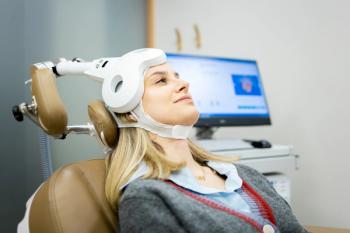
Connecting the Dots to Better Antidepressant Response
Pretreatment assessment of functional brain connectivity in patients with major depressive disorder may predict treatment response, according to new study.
Pretreatment assessment of functional brain connectivity in patients with major depressive disorder (MDD) may predict treatment response, according to
The authors noted that, although research has shown a correlation between DMN functional connectivity-particularly in relation to the PCC and mPFC-and MDD, the clinical utility of DMN functional connectivity in predicting treatment response has yet to be explored. The researchers investigated the issue via functional magnetic resonance imaging (fMRI) in a study population that included 80 patients with MDD and 34 healthy controls from the
Related content:
All patients were pharmacotherapy-naïve or had gone through a washout period prior to study initiation. The primary outcome was remission of MDD, defined as a score of ≤ 7 on the 17-item Hamilton Rating Scale for Depression (HRSD17). Extensive fMRI-180 contiguous slices, each 1 mm thick, covering the whole brain-was conducted before and 8 weeks after patients were randomized to receive escitalopram, sertraline, or venlafaxine-XR. Healthy controls were similarly scanned. Tasks assessed included selective attention using an auditory oddball task, working memory using a continuous performance task, inhibition processes using a Go-NoGo task, and conscious and non-conscious processing of emotional faces.
Results revealed that pretreatment intrinsic functional connectivity in the ACC/mPFC cluster among remitters and controls did not differ (P > .94; Cohen’s d < 0.02) whereas connectivity among nonremitters differed substantially from controls and was indicative of hypoconnectivity of the PCC with the anterior DMN cluster (ACC/mPFC: P < .001, Cohen’s d = 1.22). Further, hypoconnectivity tended to increase at posttreatment follow-up among nonremitters. In addition, the researchers found that ACC/mPFC connectivity cluster at baseline (ie, pretreatment) was not associated with other characteristics and biomarkers shown in other studies to predict remission outcomes: comorbid anxiety, exposure to early life trauma, body mass index, and cognitive impairment. PCC–ACC/mPFC intrinsic functional connectivity predicted remission more so than any of these other identified biomarkers.
The research team conjectured that the intrinsic functional organization of DMN connections must be intact to allow for a clinically relevant response to antidepressant pharmacotherapy. They added that if assessment of intrinsic functional connectivity in the DMN were incorporated into the diagnosis of MDD, it could potentially go hand-in-hand with interventions that fortify connectivity, such as transcranial magnetic stimulation, prior to initiation of pharmacotherapy in patients whose imaging results show dysfunctional connectivity; thus, better ensuring treatment efficacy.
References:
1. Goldstein-Piekarski AN, Staveland BR, Ball TM, et al.
2. Williams LM, Rush AJ, Koslow SH, et al.
Newsletter
Receive trusted psychiatric news, expert analysis, and clinical insights — subscribe today to support your practice and your patients.

















